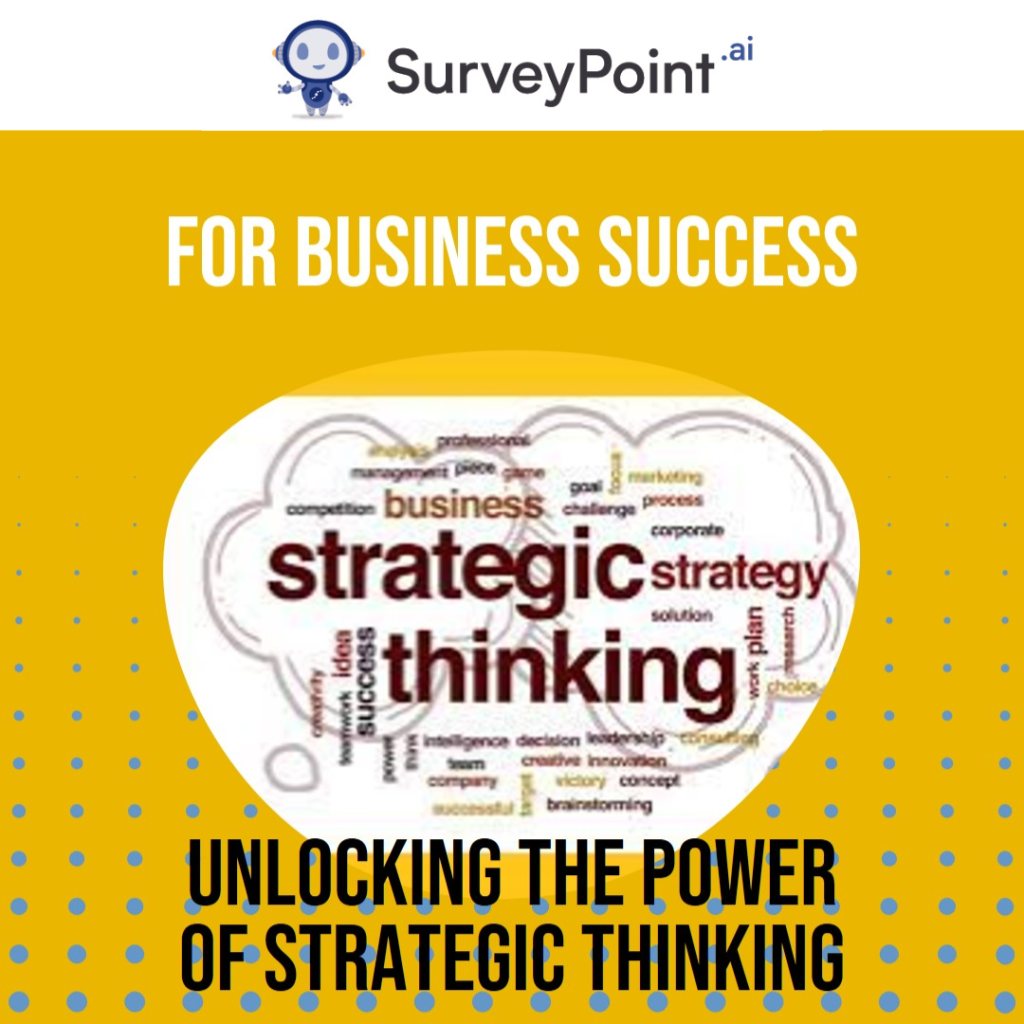In the dynamic world of business, staying ahead of the competition requires a thoughtful approach. Strategic thinking, the cornerstone of this approach, provides the compass that guides organizations on their journey toward achieving their long-term objectives.Developing a strategic mindset is crucial, as it provides the foundation for making informed decisions, solving complex problems, and achieving long-term success.
In this article, we will explore key concepts and tools that can help you navigate the complex landscape of strategic thinking, tactical planning, and decision-making.

Understanding the Basics
Strategic thinking is like the compass that guides an organization. It’s a framework that helps businesses set clear objectives and devise plans to achieve them. The decision-making process is at the core of this framework, but it goes beyond making choices. It involves critical thinking methods, problem-solving techniques, and creative problem solving.
Strategic Thinking vs. Tactical Planning
- Strategic thinking and tactical planning strategy are two essential aspects of any successful business.
- While strategic thinking deals with long-term planning and forward-looking strategies, tactical planning focuses on short-term execution and achieving specific goals.
Strategic management principles underline the importance of aligning these two aspects to ensure the organization’s overall success. While strategic thinking sets the direction, tactical planning is about how to get there.
The Decision-Making Process
One of the most critical components of strategic thinking is the decision-making process. To make effective decisions, it’s crucial to employ critical thinking methods. This involves evaluating information, understanding the implications of each choice, and making well-informed decisions.
To support these decisions, businesses often turn to competitive intelligence analysis. By analyzing the competition and market trends, organizations can gain a competitive edge.
Problem-Solving Techniques
Problem-solving is an integral part of strategic thinking and management. Whether it’s addressing issues within the organization or finding innovative solutions to meet customer needs, problem-solving techniques play a key role in business strategy development.
Creative problem solving is a valuable skill in this context. It involves thinking outside the box and generating new, innovative ideas to solve complex issues. Creative problem solving often leads to fresh and innovative strategies.
- Long-Term Planning is the cornerstone of strategic thinking. It involves setting goals and creating plans that extend beyond the immediate future. This can encompass everything from a 5-year strategic plan to a vision for the next decade.
- Innovation in strategy is an essential aspect of long-term planning. As the business environment evolves, it’s crucial to adapt and innovate your strategies to stay relevant and competitive. This can mean introducing new products or services, entering new markets, or changing the way your business operates.
Strategic Management Principles
Strategic management principles are a set of guidelines and practices that help organizations navigate the complexities of the business world. These principles ensure that the strategic thinking framework is effectively implemented within the organization. They provide the necessary structure for planning, executing, and evaluating strategies.
Strategic Analysis Tools
Strategic analysis tools are invaluable for organizations looking to make data-driven decisions. These tools help in gathering, processing, and interpreting data to inform strategic thinking. Tools such as SWOT analysis, PESTEL analysis, and Porter’s Five Forces analysis enable businesses to assess their internal and external environments, identify opportunities and threats, and devise strategies accordingly.
- Innovation in Strategy
Innovation is a driving force in today’s business landscape. It’s not just about creating new products or services; it’s about finding innovative ways to operate, reach customers, and compete. Innovation in strategy involves adopting new technologies, exploring unconventional business models, and staying agile in the face of change.
- Strategic Planning Models
Strategic planning models are structured approaches to organizing the strategic thinking process. These models provide a step-by-step guide to setting goals, making decisions, and implementing strategies. They help organizations create a roadmap for the future. Some popular strategic planning models include the Balanced Scorecard, the Hoshin Kanri method, and the SMART goal framework.
- Strategic Goal Setting
Strategic goal setting is the cornerstone of any successful business strategy. It involves defining clear, measurable objectives that guide the organization’s actions. These goals should align with the organization’s mission and vision, as well as its strengths and weaknesses. When setting strategic goals, it’s important to make them specific, measurable, achievable, relevant, and time-bound (SMART).
Developing Strategic Leadership Skills
Finally, to effectively implement a strategic thinking framework, it’s essential to nurture strategic leadership skills. These skills include the ability to communicate a clear vision, inspire teams, and lead change initiatives. A strategic leader is adaptable, open to new ideas, and capable of making tough decisions.
Conclusion
In conclusion, mastering strategic thinking is an ongoing process that requires businesses to blend long-term planning with short-term execution. The decision-making process, underpinned by critical thinking methods, is at the heart of strategic thinking. Creative problem solving and innovation in strategy are essential to address complex issues and stay competitive.
Strategic management principles, strategic analysis tools, and strategic planning models provide the structure and guidance needed to formulate, execute, and evaluate strategies. Strategic goal setting keeps the organization on the right path, while strategic leadership skills ensure the successful implementation of the strategic thinking framework.
As the business landscape continues to evolve, strategic thinking remains a crucial skill for achieving success. By applying these principles and techniques, businesses can adapt, thrive, and stay ahead in an ever-changing world.

